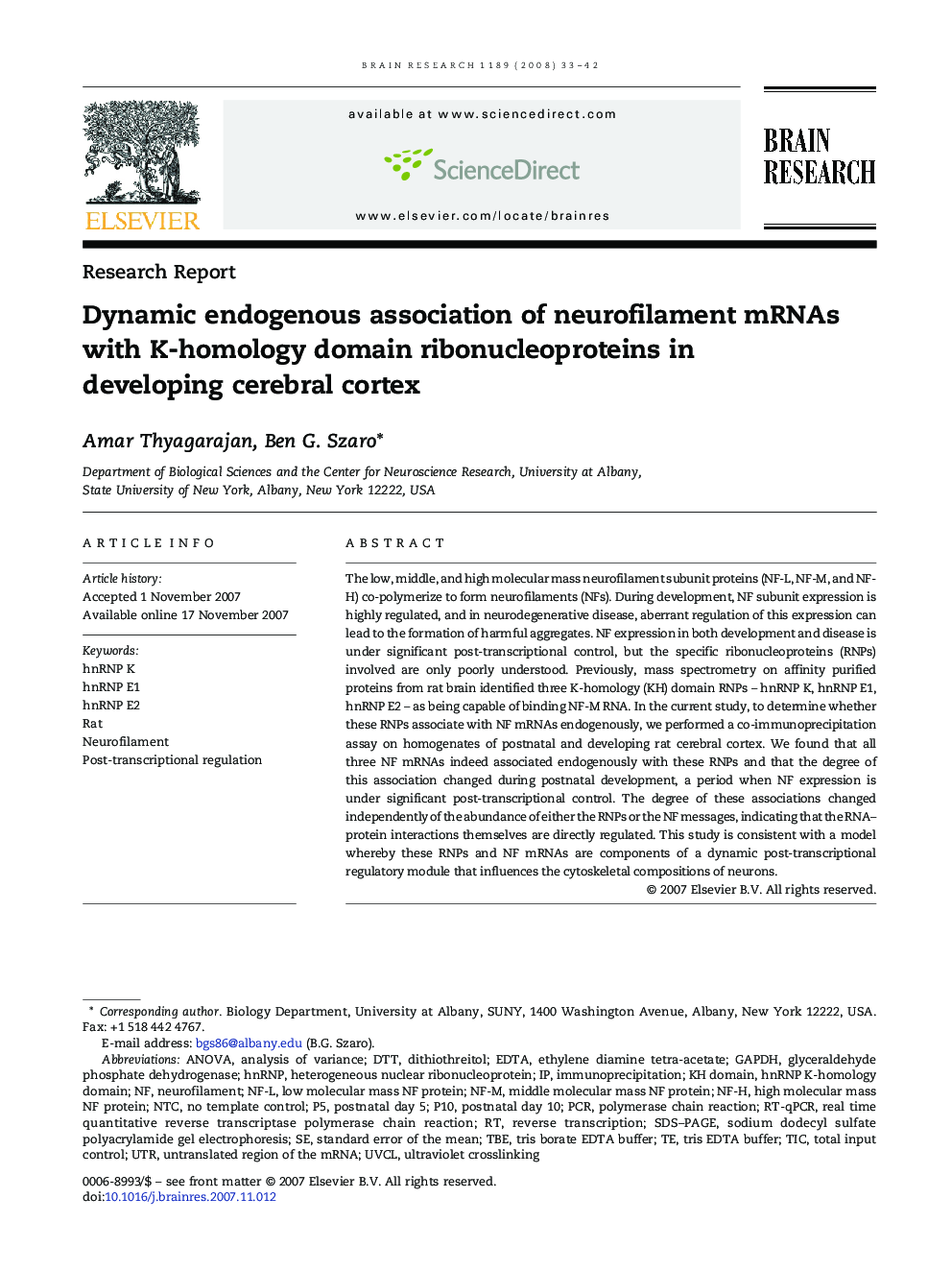| Article ID | Journal | Published Year | Pages | File Type |
|---|---|---|---|---|
| 4330191 | Brain Research | 2008 | 10 Pages |
The low, middle, and high molecular mass neurofilament subunit proteins (NF-L, NF-M, and NF-H) co-polymerize to form neurofilaments (NFs). During development, NF subunit expression is highly regulated, and in neurodegenerative disease, aberrant regulation of this expression can lead to the formation of harmful aggregates. NF expression in both development and disease is under significant post-transcriptional control, but the specific ribonucleoproteins (RNPs) involved are only poorly understood. Previously, mass spectrometry on affinity purified proteins from rat brain identified three K-homology (KH) domain RNPs – hnRNP K, hnRNP E1, hnRNP E2 – as being capable of binding NF-M RNA. In the current study, to determine whether these RNPs associate with NF mRNAs endogenously, we performed a co-immunoprecipitation assay on homogenates of postnatal and developing rat cerebral cortex. We found that all three NF mRNAs indeed associated endogenously with these RNPs and that the degree of this association changed during postnatal development, a period when NF expression is under significant post-transcriptional control. The degree of these associations changed independently of the abundance of either the RNPs or the NF messages, indicating that the RNA–protein interactions themselves are directly regulated. This study is consistent with a model whereby these RNPs and NF mRNAs are components of a dynamic post-transcriptional regulatory module that influences the cytoskeletal compositions of neurons.
